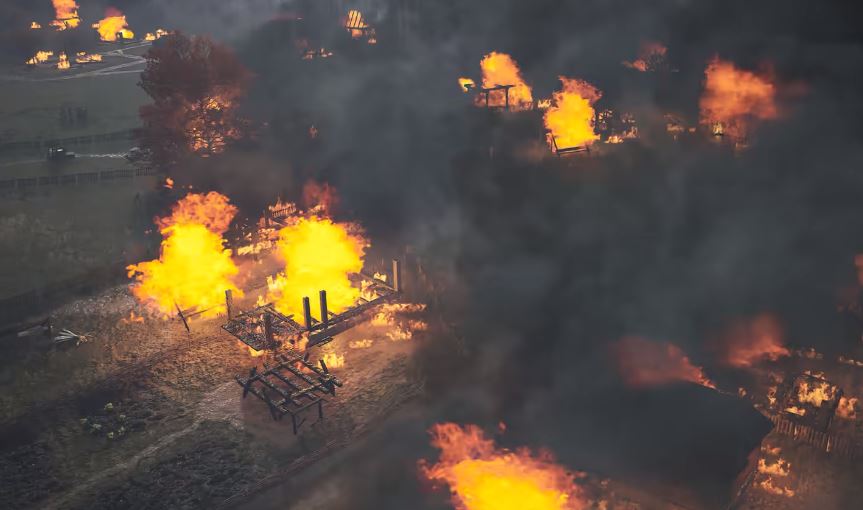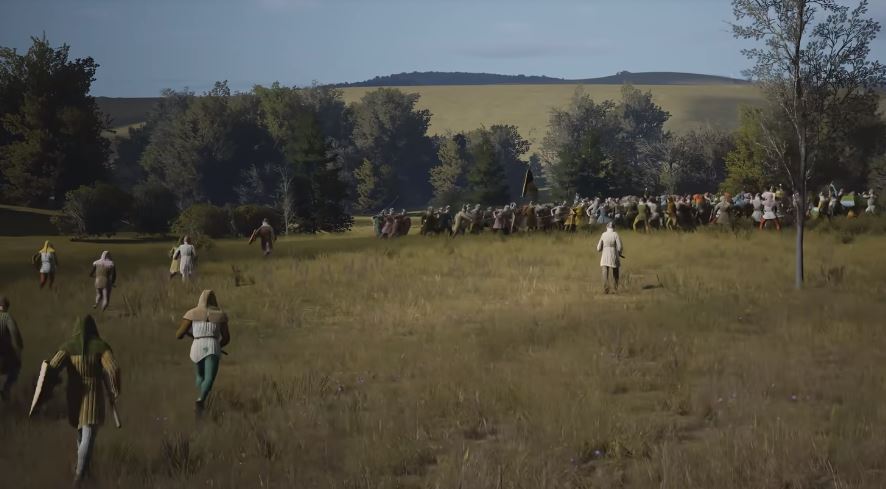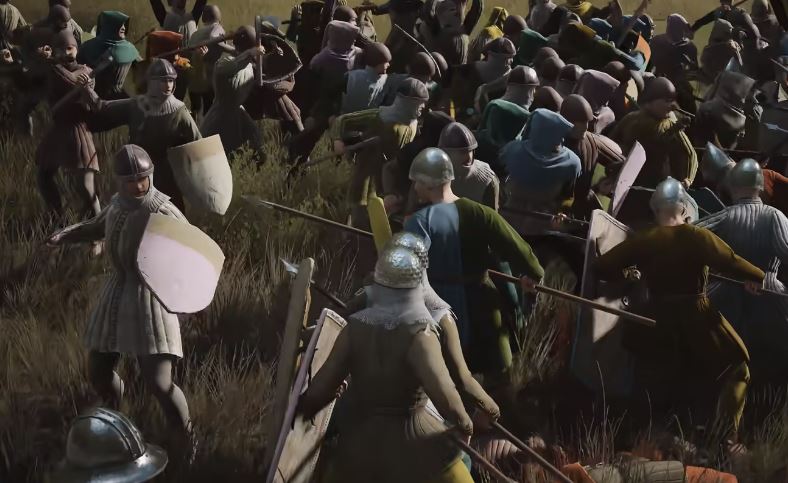Manor Lords: Beginner’s Introduction Tutorial
In the territory, there are five types of resources at the start, which include stone, clay, berries, iron ore, and game. Unfortunately, this time only one resource-rich area is available.

Lumber Camp
Before planning according to the resources surrounding the territory, it’s crucial to first build a very important structure – the Lumber Camp. In the early stages, all buildings require wood, so this should be the first structure constructed.
Harvesting Hut
The second building to construct is a food-producing building. Since we have plenty of berries around, start by building a Harvesting Hut (of course, you can choose to build something else first, as food can sustain for a few months, but for better contingency, it’s recommended to start with this).
Warehouse and Granary
Next, the buildings to construct naturally are the Warehouse and Granary to prevent resource spoilage. Then, connect them simply with roads.

Manor
Then comes the most central building in the game – the Manor. It serves as both the residence of your subjects and a production building. When constructing it, note the following: 1. The orientation of houses is determined by the line connecting the initial two points, so to have houses facing the road, start by taking the first two points from above the road. 2. Expanding the building requires stretching the Manor long enough to create expansion blocks that affect production (larger area theoretically yields more output; at least this is said for vegetables, so you may consider how much space each Manor occupies).
Sometimes, if you stretch the range slightly wider, subsidiary houses may appear. You can expand them for an additional household by spending two woods, but it might not be very efficient as having two households with only one expansion area.
At this point, some people might wonder why, after building the Manor, they still see a notification about five people being homeless. It may be because you upgraded the initial wanderers’ tents to a Workers’ Camp. Only by demolishing the Workers’ Camp can they move into the Manor.
After a short wait, construction is complete… (the house at the bottom left is slightly slanted because of the annoying hitching post occupying its position). Additionally, the house at the top left accommodates two households due to being stretched too wide, resulting in slight wastage, but it’s not a significant issue. Next, we need to address the residents’ needs.

Water Resource and Market
Considering the progress in this tutorial, the easiest needs to satisfy are water resources and the market (and since there is no leather market to meet clothing demands, currently, only fuel and food needs are met). Building a market doesn’t cost any resources, so you can start by arbitrarily placing it near the Manor.
You might then ask about fuel. Since tents don’t consume any fuel, we still have three months’ worth of fuel after completing construction. At this point, promptly supplement the Lumber Camp.
This is a good time to enter visitor mode and enjoy observing your little village (friendly reminder: press Esc to exit).
Although the villagers’ survival issues are mostly resolved, labor shortage starts to become apparent. Therefore, it’s time to start building more Manors (as long as you have vacant Manors, new families will move in after some time). During this process, the village upgrades to a small village, earning some development points. These points can be used to select things akin to technologies, and I personally prefer Trap Setting since it seems to allow hunters to produce a small amount of meat without hunting.
During this process, an event occurs where you receive 20 units of spears and shields. I don’t recall encountering this event yesterday, so it’s probably a new addition.
After a short while, some people finally move in, and now you can construct a Sawmill. This is a critical building as several structures will require the boards it produces, and these boards can also be sold. Remember that the raw material wood used in the Sawmill needs to be pulled by oxen (and its reserves are limited, requiring re-pulling after depletion), so if you have fewer oxen, its efficiency will decrease. Also, wood will be prioritized from the Lumber Camp, so it’s advisable to place the Sawmill adjacent to the Lumber Camp.
With the availability of boards, upgrade the Hitching Post to a Small Stable (or build a new one) and buy another ox. At this point, you’ll notice that purchasing a cow costs 20 “coins,” but what exactly are these coins?
Regional Wealth
These “coins” refer to regional wealth (visible on the top UI), equivalent to the public wealth of your village. In contrast, you have a Treasury, which is your private property and generally requires the construction of an Estate to increase through taxation.
One way to increase regional wealth is that each household in a Level 2 Manor provides one wealth per month (more at Level 3), but the primary method is through trade.
Open the trade tab in the Trading Post to access the trade interface. From left to right, there are five elements: trading method (pure export/import or balanced buy/sell – set according to your preference), remaining quantity of the item in your warehouse, the target quantity to keep in your warehouse (e.g. you choose to export boards, setting it at 20 means excess boards above 20 will be sold, leaving some for building constructions – and vice versa for imports), import/export prices (note the current lower import price compared to the export price – later technologies can reduce import prices), and establishing trade routes (mandatory for large-scale trades, while small-scale trades save your villagers’ time by having traders come to your village, hauling goods).
Having addressed the trade aspect, the Lord can now relax (just kidding, the Estate is primarily for taxation).
Tax Collection
The moment of truth – tax collection! Currently, you can collect two types of taxes: Tithes and Land Tax. Tithes may not be useful in the early stages, essentially exchanging food for influence (with famine warnings), whereas Land Tax allows you to convert a small portion of regional wealth into your private property. However, note that taxing reduces public opinion, and if public opinion falls below 50, the population growth stops. So, the next step will involve addressing this issue.
On one hand, increasing food variety is essential. Since I selected the Hunting Hut-related technology earlier, it wouldn’t hurt to build it as well. On the other hand, construct a Church. Once these two structures are completed, the public opinion issue is temporarily resolved.
Then, take a look at the interim achievement – the village is shaping up nicely. However, nearby bandits are beginning to sniff around, stealing goods every day. These are not ordinary bandits anymore, so we must take strong action against them in the coming spring – assembling an army to deal with them one by one. The next phase will focus on military, battles, and combat tutorials.